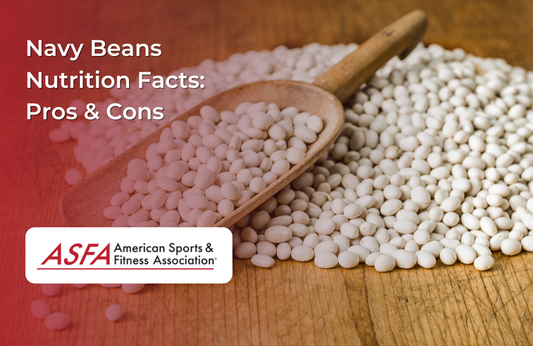As cooler days approach, bringing with them holiday festivities and indulgent, calorie-dense comfort foods, it becomes important to maintain a balanced diet that supports health and prevents weight gain. Luckily, fall offers an abundance of nutrient-dense, seasonal fruits and vegetables that can help you stay on track while adding variety and flavor to your meals. By taking advantage of the fall harvest and choosing to buy local seasonal produce, you can enjoy vibrant produce that not only enhances your meals but also promotes wellness and helps you avoid the dreaded holiday bulge. Eating local food is important as it supports local farms and economies, ensuring transparency regarding the food's origin and farming practices.
Introduction: What is Seasonal Eating?
Seasonal eating is the practice of consuming food that is in season and locally available. This approach to eating emphasizes the importance of consuming produce that is at its peak freshness and flavor, while also supporting local farmers and the local economy. By eating seasonally, individuals can enjoy a wide variety of fruits and vegetables that are not only delicious but also packed with nutrients. In this section, we will explore the benefits of seasonal eating and provide tips on how to incorporate seasonal produce into your diet.
Benefits of Seasonal Eating
Eating seasonally has numerous benefits for our health, the environment, and the local economy. Some of the key benefits of seasonal eating include:
-
Nutritional benefits: Produce that is in season is typically higher in nutrients and antioxidants than out-of-season produce. This is because seasonal produce is picked at the peak of freshness and is less likely to be stored for long periods of time.
-
Supports local farmers: By buying locally grown produce, individuals can support local farmers and the local economy. This helps to keep money within the community and promotes sustainable agriculture.
-
Environmental benefits: Eating seasonally reduces the carbon footprint associated with transporting produce from other regions or countries. This approach to eating also promotes sustainable agriculture and reduces the use of artificial additives and preservatives.
-
Cost-effective: Produce that is in season is often cheaper than out-of-season produce. This is because seasonal produce is abundant and does not require long-distance transportation.
Fall Fruits: Nature's Sweet and Savory Delights
Fall is the season of abundance when it comes to fresh fruits, each offering a unique combination of nutrients, antioxidants, and fiber. Eating food that's in season ensures enhanced freshness, superior taste, and increased nutritional value. These fruits can be incorporated into a wide range of dishes, making them not only versatile but also beneficial to your health. Let’s take a closer look at some standout fall fruits and their benefits:
Apples
Apples are arguably one of the most iconic fall fruits, and it is important to eat food that is in season, offering a satisfying crunch and sweetness. They’re also incredibly versatile and can be eaten fresh, baked into desserts, or added to savory dishes. Apples are a great source of dietary fiber, particularly soluble fiber like pectin, which can help lower cholesterol and improve digestion.
How to enjoy apples:
-
Salads: Chop apples and add them to a mixed green salad with nuts and a light vinaigrette for a fresh and crunchy addition.
-
Side dishes: Add diced apples to stuffing or rice pilaf to create a balance of sweet and savory flavors.
-
Snacks: Slice apples and pair them with nut butter for a satisfying snack that combines fiber, healthy fats, and protein.
Pears
Similar to apples, in season fruits like pears provide a natural sweetness and are rich in dietary fiber, especially in their skin. Pears are known for their ability to aid digestion and help regulate blood sugar levels due to their low glycemic index.
How to enjoy pears:
-
Grilled or roasted: Roasted pears bring out their natural sweetness and can be served with a sprinkle of cinnamon for a healthy dessert.
-
Salads: Add sliced pears to arugula salads with goat cheese for a delicious mix of flavors and textures.
-
Oatmeal: Dice pears and mix them into your morning oatmeal for a fiber-packed, naturally sweet breakfast.
Cranberries
Cranberries are often associated with holiday dishes, but as a seasonal food, they are also packed with antioxidants, vitamin C, and fiber. Their tartness makes them a unique addition to both sweet and savory recipes.
How to enjoy cranberries:
-
Oatmeal and smoothies: Add dried or fresh cranberries to hot oatmeal or blend them into smoothies for an extra immune-boosting punch.
-
Sauces and relishes: Make homemade cranberry sauce to accompany turkey or roast meats, adding depth and flavor to your meals.
-
Baking: Mix cranberries into muffins or breads for a pop of tartness that balances sweetness.
Pomegranates
Pomegranates, known for their jewel-like seeds, are best enjoyed in their natural season when they are rich in antioxidants and vitamin C. The seeds, or arils, are a delicious addition to a variety of dishes and provide a satisfying crunch.
How to enjoy pomegranates:
-
Salads: Sprinkle pomegranate seeds over spinach or kale salads for a burst of color and a sweet-tart flavor.
-
Smoothies: Blend pomegranate juice or seeds into your morning smoothie for added antioxidants and fiber.
-
Yogurt topping: Add pomegranate seeds to plain yogurt for a nutritious snack that is low in calories and high in nutrients.
Figs
Figs are often overlooked but are one of the most nutrient-dense fall fruits, especially when they ripen naturally on the plant. They are a great source of fiber, potassium, and calcium, making them a valuable addition to your diet for maintaining healthy blood pressure and strong bones.
How to enjoy figs:
-
Snacks: Eat figs on their own, or stuff them with cheese and nuts for an elegant snack or appetizer.
-
Desserts: Use figs in baked goods like tarts or pair them with honey and nuts for a naturally sweet dessert.
-
Breakfast: Add chopped figs to your oatmeal or yogurt for an added boost of fiber and antioxidants.
Fall Vegetables: Take Advantage of Seasonal Produce for Nutritious Comfort Foods
As the temperatures drop, incorporating seasonal produce like fall vegetables such as squash, pumpkins, beets, and Brussels sprouts offers comfort and nourishment while providing essential vitamins, minerals, and fiber. Local retail store crops are fresher and more flavorful when purchased directly from local growers shortly after harvest. These vegetables can be roasted, pureed, or added to soups and stews, making them perfect for heartier meals that still support a healthy diet.
Squash (Butternut, Acorn, Spaghetti)
Squash, a prime example of seasonal growing, is a fall staple that comes in many varieties, each offering a slightly different flavor profile and nutritional benefit. Butternut squash is rich in beta-carotene, which converts to vitamin A, supporting vision and immune health.
How to enjoy squash:
-
Roasted: Roasting squash brings out its natural sweetness and can be enjoyed as a side dish or pureed into soups.
-
Pasta substitute: Use spaghetti squash as a low-carb alternative to pasta by scraping out its noodle-like strands and topping with marinara sauce.
-
Stuffed: Hollow out acorn squash and fill with a mix of grains, nuts, and dried fruits for a hearty, nutritious meal.
Sweet Potatoes
Sweet potatoes are a nutrient powerhouse, rich in vitamins A and C, fiber, and antioxidants. Unlike produce transported over long distances, sweet potatoes retain their nutrients and flavor when consumed locally. Their natural sweetness makes them perfect for both savory and sweet dishes.
How to enjoy sweet potatoes:
-
Roasted or mashed: Roast sweet potatoes with olive oil and spices for a crispy side dish, or mash them with a bit of cinnamon for a comforting, nutrient-dense alternative to regular mashed potatoes.
-
Baked fries: Cut sweet potatoes into fries, season them with herbs and spices, and bake for a healthy, crispy snack.
-
Smoothies: Blend cooked sweet potatoes into smoothies for a creamy texture and a dose of beta-carotene.
Beets
Beets are often recognized for their rich, earthy flavor and vibrant color, making them a perfect addition to a sustainable lifestyle. They are an excellent source of folate, manganese, and fiber, and their natural sweetness pairs well with savory ingredients.
How to enjoy beets:
-
Roasted: Roasted beets bring out their natural sweetness and can be paired with goat cheese and nuts for a delicious salad.
-
Smoothies: Add raw or cooked beets to smoothies for a unique flavor and an extra dose of antioxidants.
-
Salads: Thinly slice beets and mix them with greens, oranges, and walnuts for a colorful, nutrient-dense salad.
Brussels Sprouts
Brussels sprouts, often roasted to perfection, are rich in fiber, vitamin K, and vitamin C, supporting bone health and immunity. Incorporating local seasonal produce like Brussels sprouts can also be cost-effective and sustainable, benefiting both your health and the community.
How to enjoy Brussels sprouts:
-
Roasted: Toss Brussels sprouts with olive oil, garlic, and a bit of balsamic vinegar, and roast them until crispy.
-
Shaved salads: Shave raw Brussels sprouts and toss with a light vinaigrette for a fresh, crunchy salad.
-
Side dishes: Sauté Brussels sprouts with bacon or nuts for a savory side dish packed with flavor and nutrients.
Pumpkins
Pumpkins are more than just a symbol of fall—they are also a nutritious vegetable packed with vitamins A and C, fiber, and antioxidants. Consuming pumpkins in the spring shortly after farmers harvest them ensures you get the freshest produce. Both the flesh and seeds can be used in a variety of dishes.
How to enjoy pumpkins:
-
Smoothies: Add pumpkin puree to smoothies for a creamy texture and a boost of vitamins.
-
Soups: Puree roasted pumpkin into soups for a comforting, nutritious meal.
-
Baking: Use pumpkin in breads, muffins, or pies for a naturally sweet dessert that’s packed with nutrients.
Where to Find Seasonal Produce
There are several ways to find seasonal produce, including:
-
Local farmers’ markets: Many cities and towns have weekly farmers’ markets where local farmers sell their fresh produce. This is a great way to find seasonal produce and support local farmers.
-
Community-supported agriculture (CSA) programs: CSAs allow individuals to purchase a share of a local farm’s produce on a regular basis. This approach to eating provides individuals with a steady supply of fresh, seasonal produce.
-
Local retail stores: Many local retail stores now carry seasonal produce. Look for stores that promote locally grown produce and ask the store staff about the origin of the produce.
-
Online resources: There are many online resources available that provide information on seasonal produce and where to find it. Some popular resources include seasonal produce charts and online farmers’ markets.
Eating Seasonal on a Budget
Eating seasonally does not have to break the bank. Here are some tips for eating seasonal produce on a budget:
-
Buy in bulk: Purchasing produce in bulk can be a cost-effective way to eat seasonally. Consider buying larger quantities of produce that is in season and freezing or canning it for later use.
-
Shop at farmers’ markets: Many farmers’ markets offer competitive pricing for seasonal produce. Consider shopping at farmers’ markets instead of traditional grocery stores.
-
Plan meals around seasonal produce: Plan your meals around the seasonal produce that is available. This will help you to avoid buying out-of-season produce and reduce food waste.
-
Use herbs and spices for flavor: Instead of relying on expensive sauces and condiments, use herbs and spices to add flavor to your meals. This will help you to save money and reduce food waste.
Exploring Fall's Harvest: A Nutritional Adventure with Seasonal Fruits and Vegetables
Fall’s seasonal produce offers an opportunity to explore new flavors and expand your culinary repertoire by purchasing fresh fiddlehead ferns. For example, purchasing fresh fiddlehead ferns in New York during the spring highlights the importance of seasonal food.
Many specialty grocery stores now stock unique varieties of fall fruits and vegetables from around the world, giving you access to a wider range of nutritious options. These stores may also offer small group tours of their produce departments, allowing you to learn about unfamiliar ingredients and discover new ways to prepare them.
If you have specific dietary needs or food allergies, a registered dietitian or nutritionist can help create custom recipes and meal plans using seasonal produce. They can guide you in incorporating nutrient-dense fall fruits and vegetables that meet your unique dietary requirements.
Conclusion: Embrace the Bounty of Fall for Health and Well-being and Support Local Farmers
By incorporating fall's seasonal fruits and vegetables into your diet, you can enjoy delicious, nutrient-packed meals that support your health goals while allowing you to indulge in the rich flavors of the season. Whether it's a fresh apple salad, a roasted squash side dish, or a comforting pumpkin soup, the versatility and benefits of fall produce are unmatched.
Fall is the perfect time to get creative in the kitchen and explore new flavors while maintaining a balanced, healthy diet. Embrace the bounty of the season, and enjoy the rich variety of fruits and vegetables that will not only satisfy your palate but also nourish your body and help you stay healthy as the colder months roll in.





